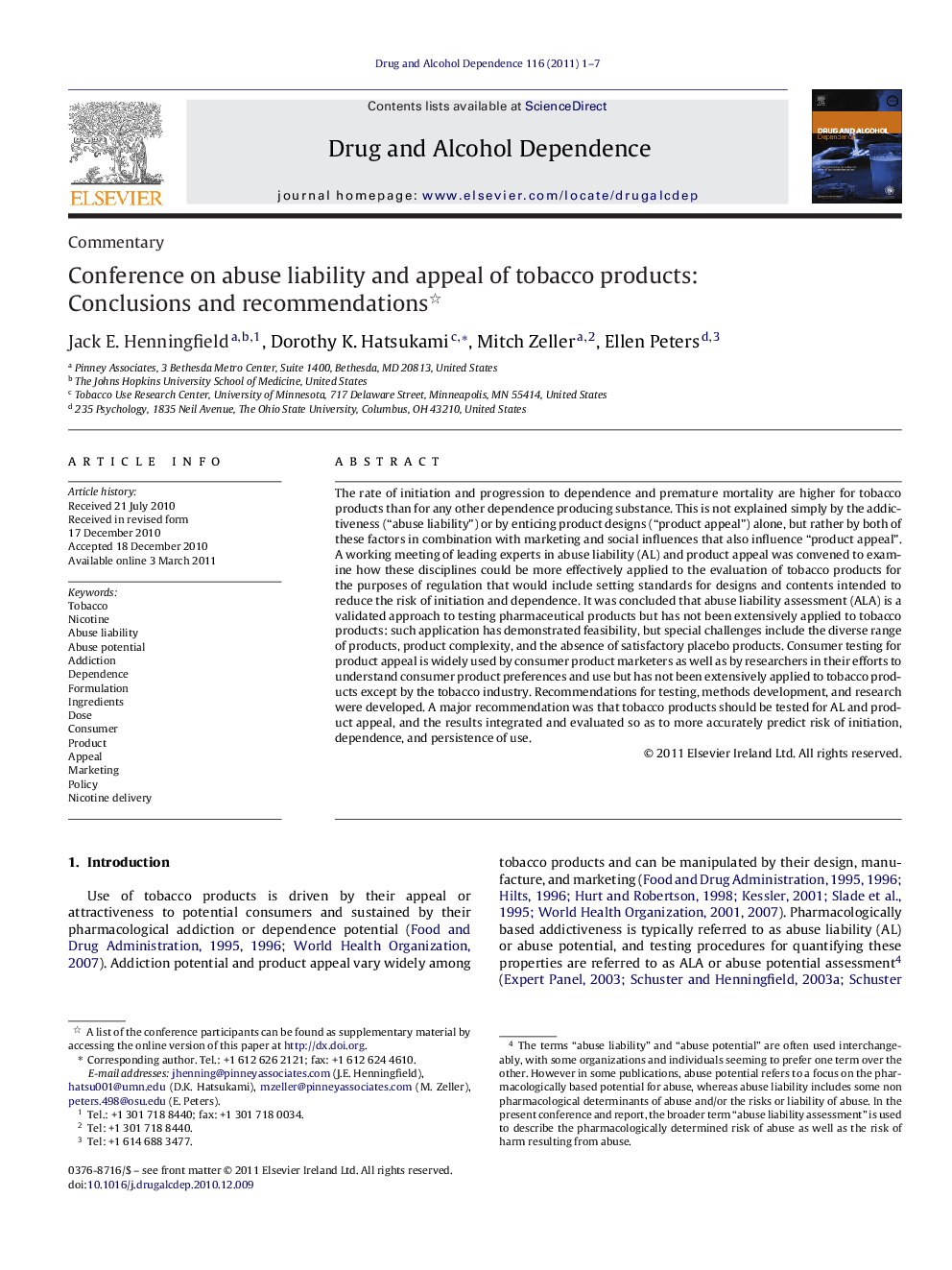| Article ID | Journal | Published Year | Pages | File Type |
|---|---|---|---|---|
| 7508999 | Drug and Alcohol Dependence | 2011 | 7 Pages |
Abstract
The rate of initiation and progression to dependence and premature mortality are higher for tobacco products than for any other dependence producing substance. This is not explained simply by the addictiveness (“abuse liability”) or by enticing product designs (“product appeal”) alone, but rather by both of these factors in combination with marketing and social influences that also influence “product appeal”. A working meeting of leading experts in abuse liability (AL) and product appeal was convened to examine how these disciplines could be more effectively applied to the evaluation of tobacco products for the purposes of regulation that would include setting standards for designs and contents intended to reduce the risk of initiation and dependence. It was concluded that abuse liability assessment (ALA) is a validated approach to testing pharmaceutical products but has not been extensively applied to tobacco products: such application has demonstrated feasibility, but special challenges include the diverse range of products, product complexity, and the absence of satisfactory placebo products. Consumer testing for product appeal is widely used by consumer product marketers as well as by researchers in their efforts to understand consumer product preferences and use but has not been extensively applied to tobacco products except by the tobacco industry. Recommendations for testing, methods development, and research were developed. A major recommendation was that tobacco products should be tested for AL and product appeal, and the results integrated and evaluated so as to more accurately predict risk of initiation, dependence, and persistence of use.
Keywords
Related Topics
Life Sciences
Neuroscience
Behavioral Neuroscience
Authors
Jack E. Henningfield, Dorothy K. Hatsukami, Mitch Zeller, Ellen Peters,
